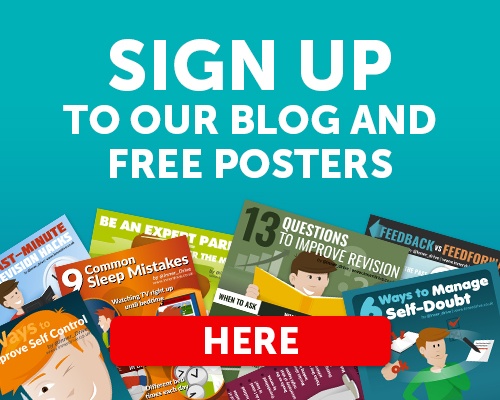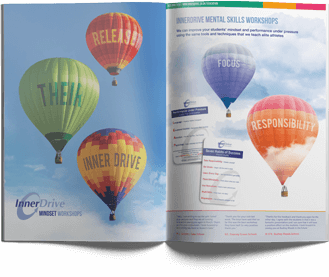This blog is a summary of the lessons we learned from retrieval practice expert, Kate Jones in our "Retrieval Practice & Curriculum Design" webinar, and features resources she created. If you want more of this, join us for our upcoming teacher CPD webinars...
Retrieval practice is one of the most effective learning strategies and requires students to generate an answer to a question. By using retrieval practice, students recall previously-learnt knowledge which creates stronger memory traces and increases the likelihood that the information will be transferred to their long-term memory.
However, testing can often be a source of stress for students. It is therefore essential that retrieval practice is kept low stakes. One way of doing this is by making it a classroom norm and embedding it across the curriculum.
Let’s take a look at what retrieval practice is and the five-step plan that outlines practical and sustainable methods of embedding it within the curriculum…
What is retrieval practice?
Retrieval practice is any activity that requires you to generate an answer to a question. It can be used across many disciplines including vocabulary, maths and science. Some benefits to using retrieval practice include:
- Identifying gaps in students’ knowledge
- Making connections
- Checking for misunderstandings
- Strengthening connections
- Making connections robust under pressure
- Making it easier to learn new things
Therefore, embedding retrieval practice across the curriculum can be very beneficial to support students’ learning. Let’s take a look at Kate Jones's five-step plan which outlines practical ways to embed retrieval practice within the curriculum…
A five-step plan to embed retrieval practice in curriculum design
1. What do students really need to know and do?The starting point when designing a curriculum or review is to outline what students need to be able to recall. It is vital to separate the essential content from the desirable content.
But why is this so important? Well, it is all to do with retrieval-induced forgetting. This is when recalling some information reduces your ability to remember the related information. Therefore, students who are taught unnecessary information might forget the really important stuff.
A useful tool that helps outline the essential content is knowledge organisers. This is simply a piece of A4 paper outlining all the core information that students should know. It can be in a similar style to a “cheat sheet” and can be given to students. Knowing all the information they will be tested on makes retrieval practice low stakes for students.
2. Have a range of low effort, high impact techniques and tasks
Implementing retrieval practice to the curriculum must be sustainable for teachers’ planning, feedback and workload. It should therefore take low effort but use a variety of tasks and question designs.
Some techniques include multiple-choice questions, cued recall and free recall. There are also different tasks you can use, such as:
- Cops and robbers – This task encourage students to fill out the information they know for 5 minutes, followed by 5 minutes of “stealing” information from their peer.
- Challenge grid – Within this grid, there are questions taken across different lessons. The further back a question is, the more points the student gets for answering it.
- Retrieval practice placement – This uses verbal recall as students are encouraged to choose and answer one type of question.
- Go for gold – Students are given keywords under “bronze, silver or gold”. They then answer a question and are encouraged to use the keywords across the three tiers.
- Entrance and exit tickets – These “tickets” are given at the start or end of the lesson and contain one to three questions that are short, clear and concise.
3. Build into long- and short-term planning
This helps encourage more responsive teaching. It is important to set time aside to plan, deliver and reflect if it is working. Therefore, retrieval practice should be planned for the lesson. If there is no time, you can also do it after the lesson as an extra homework task.
It is also important to clearly distinguish to students what formative and summative assessments are. Formative assessments can be done throughout the year and their purpose is to monitor students learning. This includes low stake tasks and is best to gain the benefits of retrieval practice. Summative assessments, however, are an evaluation of students learning and takes place as final exams.
4. Consider the academic calendar
At times, rehearsal and review of the content can actually be better for students than using retrieval practice.
An example is if Year 11 students are reviewing Year 10 content; as a long time has passed, students will often struggle with remembering the information. Therefore, the retrieval practice would become high stakes and end up being a source of stress for students.
5. Continually review and reflect
The final, yet very important step is to continually review and reflect on the process.
Some key questions that can aid you during this step include:
- Does it have an impact?
- Are there any noticeable benefits?
- What challenges have you faced?
- Are your students embracing it?
- Are the techniques low effort and high impact?
- How are your students responding to it?
- What are the next steps?
Final Thoughts
Retrieval practice is a very effective technique to help students learn. There are many ways to implement it within the classroom. However, it is important to keep in mind that learning happens over time. Therefore, embedding retrieval practice across the curriculum also happens over time. Even if this is starting with small changes, it can lead to great benefits for the students’ learning.
Thanks to Kate Jones for the content in this blog – make sure to follow her on Twitter at @KateJones_teach.






